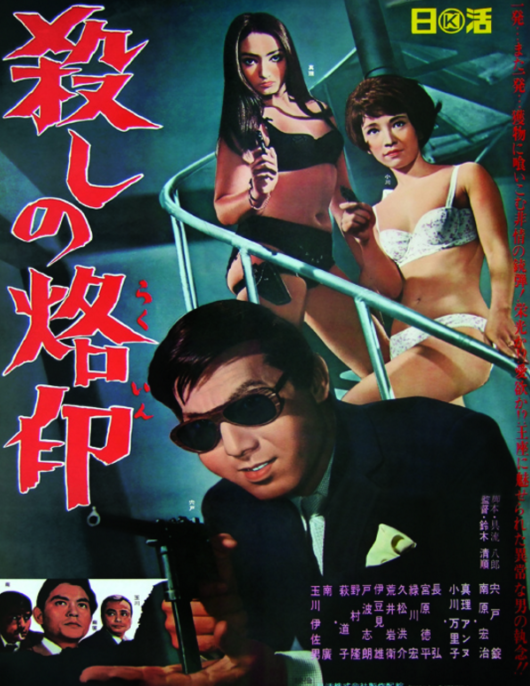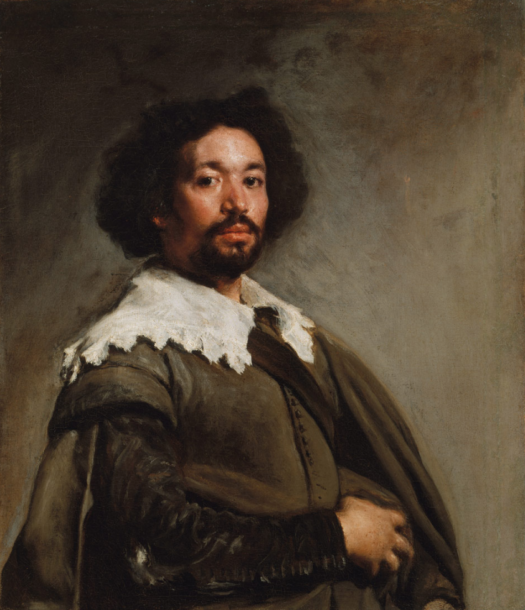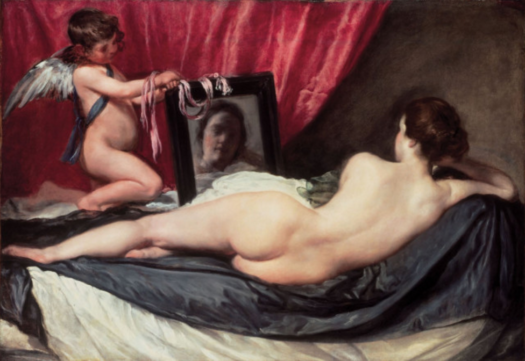Here’s my annual lists of films I saw at the theatre (I don’t watch them on TV.) I saw a very interesting series of Seijun Suzuki films at Harvard. He inspired people like Quentin Tarantino. “Branded to Kill” is probably the one to see if you are a Tarantino fan.
2016 Films
Dekalog 3/4/5/6/7/8/9/10 (Poland, 1989) 3.9 A series of 10 one hour made for TV Polish films by Krzysztof Kieslowski, often regarded as one of the greatest film series of all time. I saw the extended versions of #5 and #6, “A Short Film About Killing” and “A Short Film About Love”. I liked this even better than the more polished films he made after coming to the West (Red, White, Blue, etc.)
The Asphalt Jungle (US, 1950) 3.9 A near perfect film noir, directed by John Huston. Features a very young and radiant Marilyn Monroe. And the legendary Sterling Hayden.
The Wailing (Korea) 3.9 A near perfect horror film. Great films are usually outstanding for reasons unrelated to the specific genre they fall into. Think how Vertigo (thriller), 2001 (sci-fi), Apocalypse Now (war), The Shining (horror), etc., transcend their genre. (And yes, The Shining doesn’t quite belong with the other three, but you get my point.) The Wailing isn’t as original as these films, or even as original as the Korean horror film Oldboy, but it steals from the best and puts it all together brilliantly.
In a Lonely Place (US, 1950) 3.8 My all-time favorite film noir. People talk about Bogart and Bergman, or Bogart and Bacall, but Gloria Graham and Bogart are perfect in this film. They seem to be acting on a different plane of reality from everyone else. Or maybe they don’t seem to be acting at all. Heartbreaking.
Happy Hour (Japan) 3.8 A five and a half hour film about four Japanese women who are in their late 30s, just the point where disillusionment with life is setting in. The director gave a talk afterwards. One of the actresses (who won an award at Locarno) was sitting in the same row as me.) What if the 2 hour film is a giant mistake? Maybe all films should either be an hour (short stories) or 5 hours (novels).
Mountains May Depart (China) 3.8 Loved this film. A very intelligent and emotionally powerful vision from Zhangke Jia. I don’t know if it’s his best, but it’s certainly my favorite. Reminded me a bit of the Taiwanese film Three Times, in the effective way it used pop music in a film encompassing three periods of time.
The Handmaiden (Korea) 3.7 A return to form by Park Chan-wook. Not as original as Oldboy, but otherwise a beautifully made film.
The Forbidden Room (Canada) 3.7 This one really should be seen on the big screen. Strongly influenced by silent film, but otherwise kind of indescribable. This is the sort of film that differentiates cinema from TV.
Eyes Wide Shut (US, 1999) 3.6 Kubrick’s final film seems slightly better the second time around, maybe because I was paying more attention to the style than the story. He slipped a bit late in his career, but not very much. (I love the last word of his final film.) Unfortunately it was screened in digital, which looks awful.
Cemetery of Splendour (Thai) 3.6 Made by perhaps the most interesting director in the world today, but I found it more difficult to follow than his other films, maybe because it referred to political/cultural events in Thailand on which I am not well informed.
Hunt for the Wilderpeople (New Zealand) 3.6 Very nicely done, especially the two lead actors, as well as one other who appeared early in the film.
Arrival (US) 3.6 Basically a 2-hour plea to reject the politics of Donald Trump. The aliens seemed like a mix of octopus and elephant, while their spaceship seemed like a giant whale. All three animals have a reputation as being quite intelligent. A very moving film, although two hours later you might feel like you were conned.
Our Little Sister (Japan) 3.6 Koreeda has great ability to see the good in different types of people. This is a beautiful understated film, very skillfully made. You don’t leave feeling like you’ve been emotionally beaten with a rubber hose (which is how I feel after the typical Hollywood tearjerker.) This sort of film almost makes me want to move to Japan—but I’m too dumb to learn foreign languages. My brain is wired for visual images, a trait that seems . . . well, sort of Japanese.
Moonlight (U.S.) 3.6 I didn’t like this quite as much as I expected, given the reviews, but on the other hand I found it more likable than I expected. Easier to watch.
The Wasted Times (Chinese) 3.5 This was panned by the critics, and there are certainly flaws. But I enjoyed the film, which was strikingly shot. Zhang Ziyi was superb, and still looks quite young. The director is much better at creating individual scenes than an overall coherent film.
Embrace of the Serpent (Colombia) 3.5 Engrossing Amazon adventure story, influenced by Apocalypse Now, 2001 A Space Odyssey, etc.
Love and Friendship (US/British) 3.5 I’m not the biggest Jane Austin fan (stories about society go over my head), but Whit Stillman did a very nice job with this lesser known novella.
City of Gold (US) 3.4 A very enjoyable documentary about the food critic for the LA Times, who ends up carrying the film.
Only Yesterday. (Japan) 3.4 An animated film from 1991 that was finally released in the US.
Hieronymus Bosch, Touched By the Devil (Dutch) 3.4 Interesting documentary about a painter that is hard to see in real life, especially the all-important tiny details. For that alone the film was worthwhile. I’m not sure if Bosch is viewed as a surrealist, but if he is then he is surely the greatest painter in that genre.
Stage Sisters (China) 3.4 A beautifully restored print of a classic Chinese film from 1964. Interesting as a historical document, and for what it (implicitly) tells us about the Cultural Revolution that followed (when the film was banned.)
Tianyun Mountain (China) 3.4 A 1980 film by the same director as Stage Sisters. As a pair, they form a fascinating history of China from the 1930s to 1980. From turmoil to a happy (revolutionary) ending in the first film, and then from the happy post-revolution period to the nightmares of 1958-76, to a somber recovery in the second film.
Kaili Blues (China) 3.3 The first film made by a director from the Miao minority in China. It brought back pleasant memories of my trip through China in 1994, and it showed a lot of technical sophistication. But in the end it seemed a bit too similar to other “art films” made by East Asian directors (and also Sokurov.) Still it showed a lot of promise and I look forward to the director’s next film.
Night Train to Munich (Britain, 1940) 3.3 An enjoyable Carol Reed film that is reminiscent of Hitchcock’s “The Lady Vanishes”. Made before WWII got really serious, and it shows.
The Fall of the House of Usher (French) 3.3 A 1927 silent film by Epstein, shown with a shorter film.
Killer’s Kiss/Fear of Desire. (US) 3.3 Kubrick’s first two films, and the only ones I had never seen before.
Dying of the Light/Out of Print (US) 3.2 Two documentaries on the sad decline of film, which is rapidly being replaced by digital.
Francofonia (Russian/French) 3.2 A documentary on the Louvre, by the Russian director Sokurov. The documentary actually had relatively little to say about the Louvre itself, and instead focused on the collaboration between a German officer and the director of the Louvre, in trying to save French art during WWII. In the end the film was too ambitious, trying to do too many things, but Sokurov is always worth watching.
Manchester-by-the-Sea (US) 3.2 I’m not a big fan of this sort of Hollywood actor-driven film, but I do like Casey Affleck, and enjoyed seeing places that I’m familiar with visiting.
Hail Caesar! (US) 3.1 Scene by scene it was well directed, but somehow fell flat. The Coen brothers need to think about what made their early films so successful.
Jason Bourne (US) 3.0 Skillfully directed, but by now I’ve lost interest in the plot. Too many ridiculous car chases. The first Bourne film was a sort of breakthrough, which influenced the Bond series. They should have quit while they were ahead. Still a reasonably suspenseful 2 hours—not a bad film.
Café Society (US) 3.0 Scene by scene it was well directed, but somehow fell flat. Woody Allen needs to think about what made his early films so successful.
Searching for Mr. Right, Pt. 2 (China) 3.0 Thank God it had nothing to do with Pt. 1, which I missed! A Chinese romcom that was sort of entertaining, and sort of interesting in a sociological sense (which is often the case with Chinese films, given the pace of cultural change). As is often the case, lots of the puns were lost in translation. After speaking with my wife, I realized the film was actually much wittier than it seemed to this westerner.
Miss Hokusai (Japan) 2.7 Watching this uninspired animated film just made me want to look at Hokusai art instead.
The Crimson Kimono (US, 1959) 1.5 A film noir with an awful screenplay and wooden acting. I guess the interracial romance was considered shocking in 1959, and they didn’t see a need to do anything more.
Mermaid (Chinese) 1.5 I missed a lot of the humor, which involved hard to translate Chinese puns. But even so, I doubt I would have liked it.
Seijun Suzuki Festival:
Gates of Flesh (Japan, 1964) 3.7 I’m stunned that Japan was making films like this in 1964. Hollywood? Not so much, even today.
Ziguernerweisen (Japan, 1980) 3.7 Voted best Japanese film of the 1980s, by the Japanese film critics. Makes Taisho era Japan seem mysterious and seductive.
Branded to Kill (Japan, 1967) 3.6 Finally, a cult movie worthy of the name. Imagine if Tarantino and a French New Wave director had collaborated on a black and white 1967 Japanese film about hired killers.
Story of a Prostitute (Japan, 1965) 3.5 Same actress as Gates of Flesh, and equally riveting performance. Sukuzi has a great eye.
Carmen From Kawachi (Japan, 1966) 3.4 The final film in his “flesh trilogy” about prostitutes with a passion for life.
Pistol Opera (Japan, 2001) 3.4 Hard to make sense of, but it contains some great visual images.
Kagero-Za (Japan, 1981) 3.4 The second film in the Taisho trilogy. Also very mysterious, but I was tired when I saw this, and 140 minutes is a long time when there’s no clear plot. I hope to see it again.
Tokyo Drifter (Japan, 1966) 3.4 A breakthrough film in terms of style.
Tales of Sadness and Sorrow (Japan, 1977) 3.1 Kind of disappointing compared to other Suzuki films, but still somewhat interesting.
Favorite comment of the year (by Anon/portly). Great Radiohead and Bjork recommendations.
PS. Quietus named this CD by Arabrot the best album of the year. It’s good! So why are there zero reviews on Amazon? I also listened to a lot of Steve Earle this year.
Poster for Branded to Kill:

 The smarter people who worry about cultural appropriation would say that Velasquez should not have done this painting, as he can’t possibly know what it’s like to be a black man. The dumber people who worry about cultural appropriation would say the painting is OK, because unlike film, painting is not about the inner lives of its characters.
The smarter people who worry about cultural appropriation would say that Velasquez should not have done this painting, as he can’t possibly know what it’s like to be a black man. The dumber people who worry about cultural appropriation would say the painting is OK, because unlike film, painting is not about the inner lives of its characters. People on the left sneer at the lack of cultural sophistication of many Trump supporters. Then they concoct an ideology that looks at art with all the sophistication of a 8-year old. They would look at Magritte’s famous painting and not get the joke.
People on the left sneer at the lack of cultural sophistication of many Trump supporters. Then they concoct an ideology that looks at art with all the sophistication of a 8-year old. They would look at Magritte’s famous painting and not get the joke.




